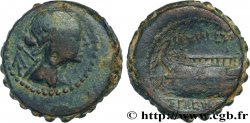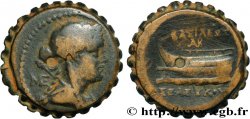bgr_868054 - SYRIA - SELEUKID KINGDOM - SELEUKOS IV PHILOPATOR Double unité
125.00 €(Approx. 145.00$ | 110.00£)
Quantity
Add to your cart

Type : Double unité
Date: c. 187-175 AC.
Mint name / Town : Antioche, Syrie
Metal : bronze
Diameter : 19 mm
Orientation dies : 12 h.
Weight : 8,39 g.
Coments on the condition:
Monnaie centrée à l’usure régulière. Joli buste. Revers agréable. Patine marron
Catalogue references :
Obverse
Obverse legend : ANÉPIGRAPHE.
Obverse description : Buste lauré et drapé de Dionysos à droite, le thyrse sur l’épaule ; monogramme derrière la têts.
Reverse
Reverse description : Proue de galère à gauche.
Reverse legend : BASILEWS// SELEUKOU
Reverse translation : (du roi Antiochus).
Commentary
Bronze serratus. Trou de centrage visible au droit et au revers.
Bronze serratus. Centering hole visible on the right and reverse
Bronze serratus. Centering hole visible on the right and reverse








 Report a mistake
Report a mistake Print the page
Print the page Share my selection
Share my selection Ask a question
Ask a question Consign / sell
Consign / sell
 Full data
Full data





